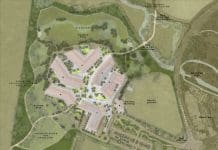A lot of people say they ‘do’ BIM. But what does that really mean? Niraj Mistry, senior BIM assessor at Stroma Certification, says BIM is actually about joining the dots through engagement and collaboration
I speak to people every day who claim that “we do BIM”. Considering Building Information Modelling as a concept, you come to realise that those three words alone do not mean a great deal. The phrase can only really be quantified in context and through examination of your organisation.
Don’t ‘do’ BIM; engage with it
How we engage with BIM is of more importance, thus I am going to ask a question:
Q: How many disciplines, services or products exist in the construction industry?
A: Don’t bother trying to count. You’ll be here for a while so I encourage you to read on.
The point is that on a project where BIM is being implemented, everyone plays their part. The specific nature of the role is unique to every one of us and will vary from project to project
There is still a lot of misconception in the industry that BIM is about software alone. We must really start recognising that this is absolutely not the case. Though software is undoubtedly a key element, BIM is better described as digital information management.
So perhaps the real question is ‘Do we all do digital information management?’ The simple answer is that we each play our role in it. It is about collaboration. Collaboration means working with someone to produce something. Effectively, this refers to a team effort with the aim of reaching a common goal.
Joining the dots
Consider the image above. By joining the dots, the puzzle reveals an elephant. This represents our BIM project. By completing the puzzle, we deliver what the client wants. The dots represent each stage of the construction process and the different roles that work to bring a project to its completion. Only by connecting the dots can we solve the puzzle; only by working together can we deliver a construction project using BIM.
If the dots are not in the right place or sequence, we will not achieve what we want. This is no different from the principles of a BIM Execution Plan (BEP).
The puzzle can represent the BIM project. However, the principle can also be applied to your own organisation. Which individuals in your organisation need to work together to deliver BIM? How do they need to be upskilled? What information transfer needs to occur to allow their role to be fulfilled correctly?
It is best not to consider this task as an elephant, a complicated and large entity. Rather, think of the process that connects the dots and any incremental changes required to make each connection work.
Innovation is an important part of BIM. You need to make sure that each resource is in the right place so that solutions can be found and innovations take place. Who are the innovators in your organisation?
Helping you complete the puzzle
Becoming BIM Certified means that your organisation is operating in alignment with BIM Level 2 and its associated principles. I would welcome a discussion with your organisation by emailing me at n.mistry@stroma.com or calling 01977 665 420. Let’s ‘do BIM’ together.
Niraj Mistry
Senior BIM Assessor
Stroma Certification
Tel: +44 (0)845 621 11 11

















